
It’s getting harder and harder to market products and services because the landscape is getting more and more competitive. With so many options facing your target audience, how can you ensure they choose your product or service?
When using a combined marketing approach for your business, one of the best tactics you can use is emotional marketing. If you can build an emotional connection with your audience, you’re going to be more likely to secure their purchases.
But what is emotional marketing and how can you ensure you target the correct emotions when trying to make a sale? Let’s take a look at everything you need to know to employ this marketing tactic to increase conversions and drive sales.
What exactly is emotional marketing?
When building an eCommerce site, it can be hard to forge connections through a screen. But emotional marketing can help. It’s the intentional use of persuasive marketing messages that aim to connect with your customers’ feelings.
It can help to form a deep, meaningful connection with your target audience to achieve the desired result, which is typically making a sale.
With this marketing technique, you can target any human emotion, such as joy, fear, or even anger. Because human emotion tends to linger, emotional marketing is super effective for making sales. Here are some reasons why it’s so effective:
-
You will earn more customer loyalty
-
You will create brand advocates for your products and services
-
Your content will be more shareable
-
Your brand will become more memorable
-
Your marketing will influence customer purchasing choices
So, how can you use this marketing technique to get results and make more sales through your eCommerce site? Keep reading to find out.
Inspire a feeling of FOMO by creating a sense of urgency
Inspiring the fear of missing out, or FOMO, is a marketing tactic that every eCommerce business should be using. It’s stirred up when someone feels like they are missing out by not being in a specific place or having a particular item.
This is a powerful motivator because it drives emotions that lead to sales. People who feel they are missing out on a critical experience are more likely to purchase, so they feel included.
Here is an example of this in action from the online retailer BoxLunch. Notice how their sale has a countdown clock, showing when their deals will expire. This creates a sense of urgency among their customers, who will feel they need to act quickly to benefit from this special discount.
When trying to instill a sense of FOMO in your customers through your site, use language that makes it clear the discount or item will only be available for a short time. Creating a sense of urgency is one of the best ways to generate emotion in a potential customer and drive them to complete a purchase on your site there and then. So, be sure to keep this in mind when designing your site if you’re looking to generate more sales.
Use imagery that will make your audience feel something
Your website imagery can be a powerful tool for helping your ideal customers feel something. This will help to build a connection between them and your brand and lead your visitors to purchase from your business, which will increase your conversions.
You can use imagery that inspires both positive and negative emotions. Here are some examples of how images can spark emotions for your users:
-
An image of a helpful member of staff can help them feel relieved.
-
A photo of a problem — such as a spilled glass of wine on a white carpet or a damaged property — will remind them of their everyday stresses.
-
A photo of a happy child playing with a new toy will get their parents excited.
-
An image of a group of people enjoying themselves will make them want to be included in the fun.
Depending on the products or services you offer, you’ll want to choose imagery that inspires the right emotions. For example, if your service is meant to take the stress out of a task, you’ll want your pictures to reflect a calm, cool, and collected tone.
For inspiration, take a look at this example from the background search tool Intelius. Notice how they have used an image of people who have presumably just been reunited through the company’s services. This is an excellent choice of imagery, especially since their primary goal is to get users to use their background search services.
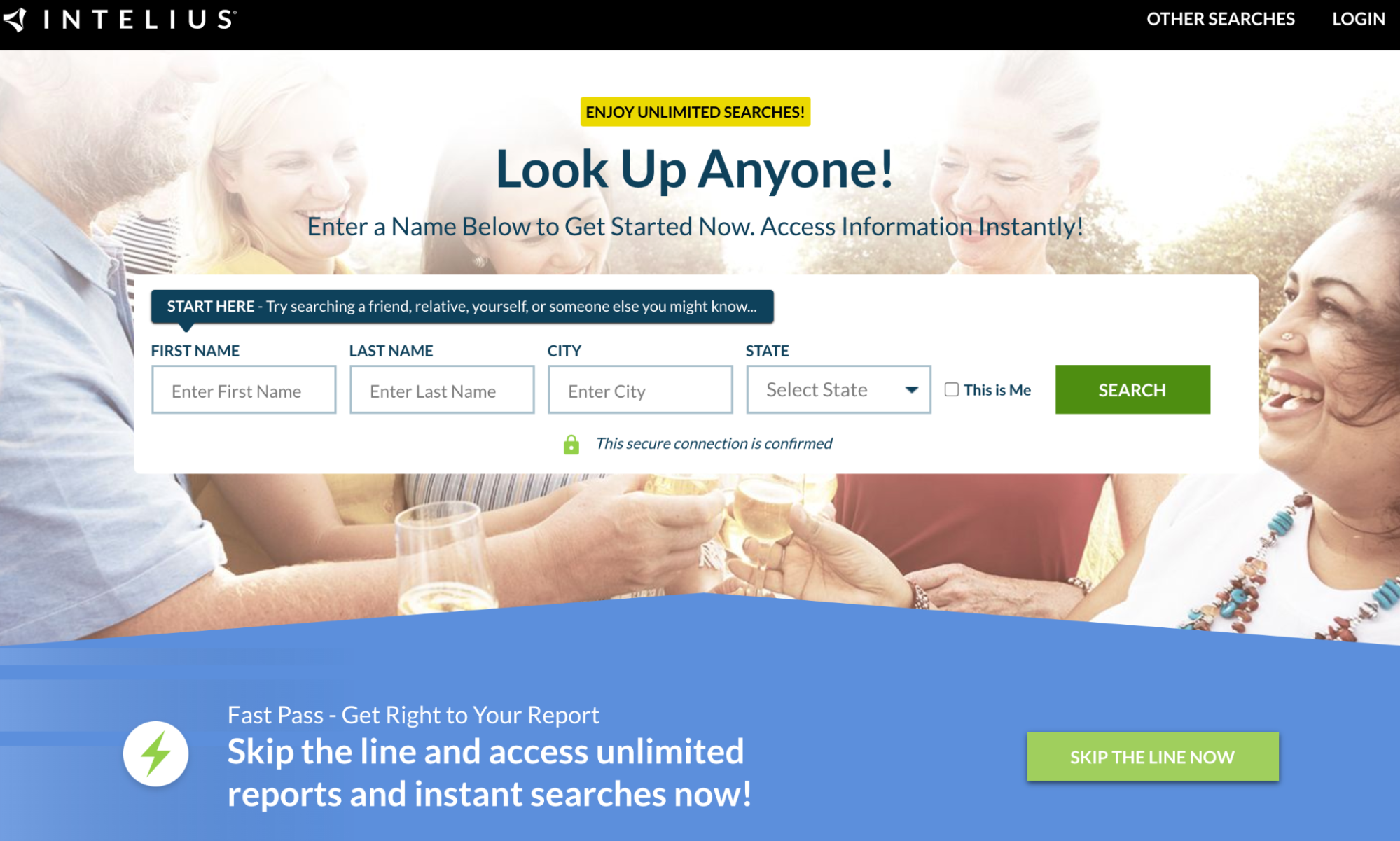
Notice how the image is bright, and all the people pictured are smiling. The emotions conveyed are clearly joy and relief. You can use the same design strategy when building your pages by including images that show the positive results of your products or services.
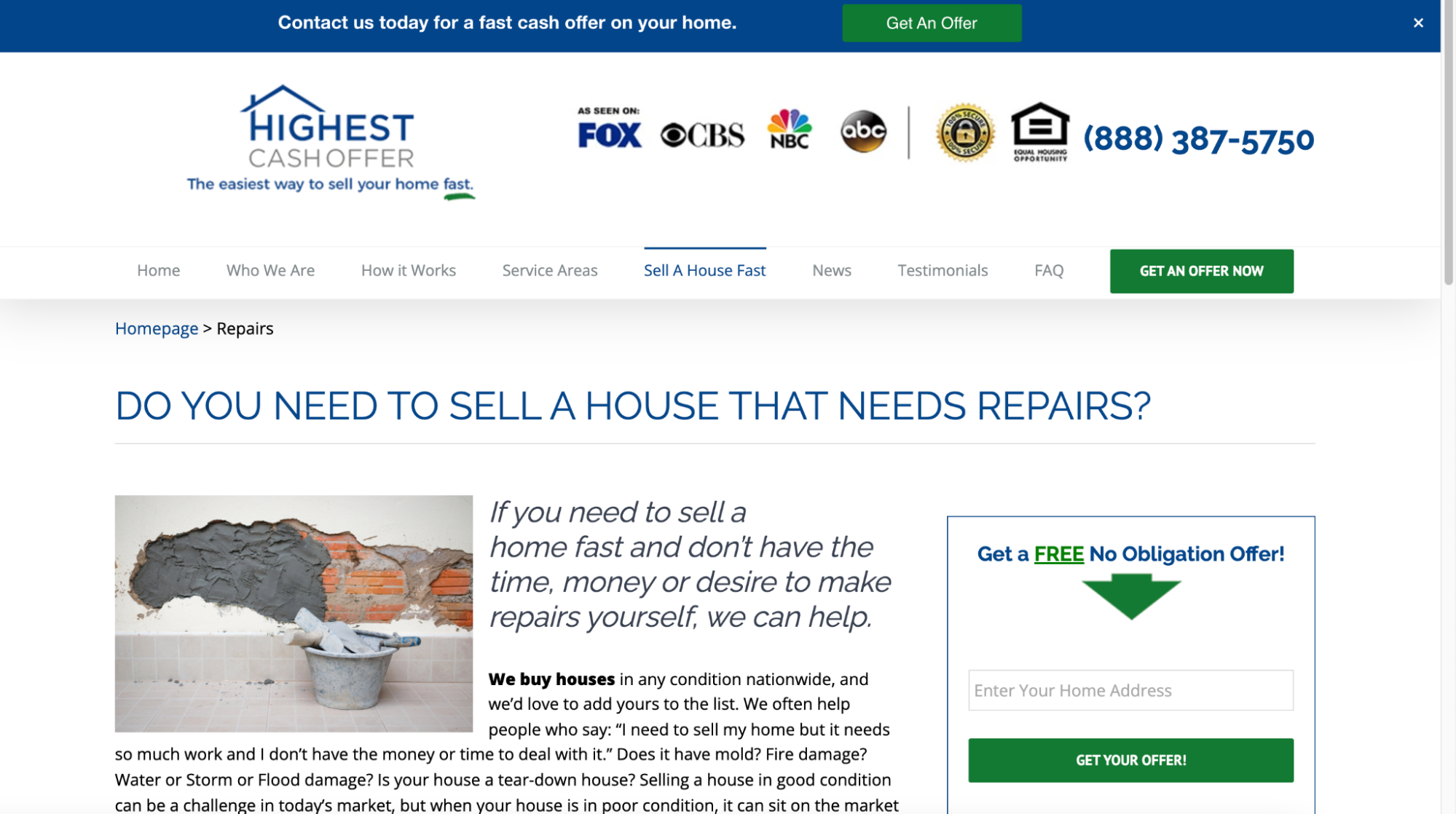
On the other hand, Highest Cash Offer takes a different approach. Since they buy homes in any condition, they have chosen to use an image of a damaged wall on one of their relevant web pages. This is sure to inspire fear and anxiety, but also relief, in their customers, especially if they own a home and know that, at any moment, a costly repair may be in order.
Remember that emotional marketing is about choosing the right persuasive imagery based on what your business is trying to help your customers achieve. When selecting images for your site, first figure out what emotion you’d like to encourage. You need to choose the feeling that will make people realize they need your products or services right away.
Once you’ve identified the target emotion, look for images that evoke it. You could even consider running some A/B testing with different ideas to see which one inspires the strongest and most helpful emotion in your customers.
Help your customers to feel understood with useful content
Most of all, customers just want to feel understood. So, if you can create content that answers their questions and addresses their pain points, you can show that you know what they need and how to solve their problems.
To optimize your website so your customers feel understood, you’ll first need to know what questions and pain points they have. The best way to identify these is to ask your audience directly. Consider sending out a survey or creating a social media poll asking if your audience has any questions or concerns they’d like you to address.
You could also ask your customer support team for ideas. Since they spend all day talking with your customers, they can give you a critical insight into what questions they hear over and over again.
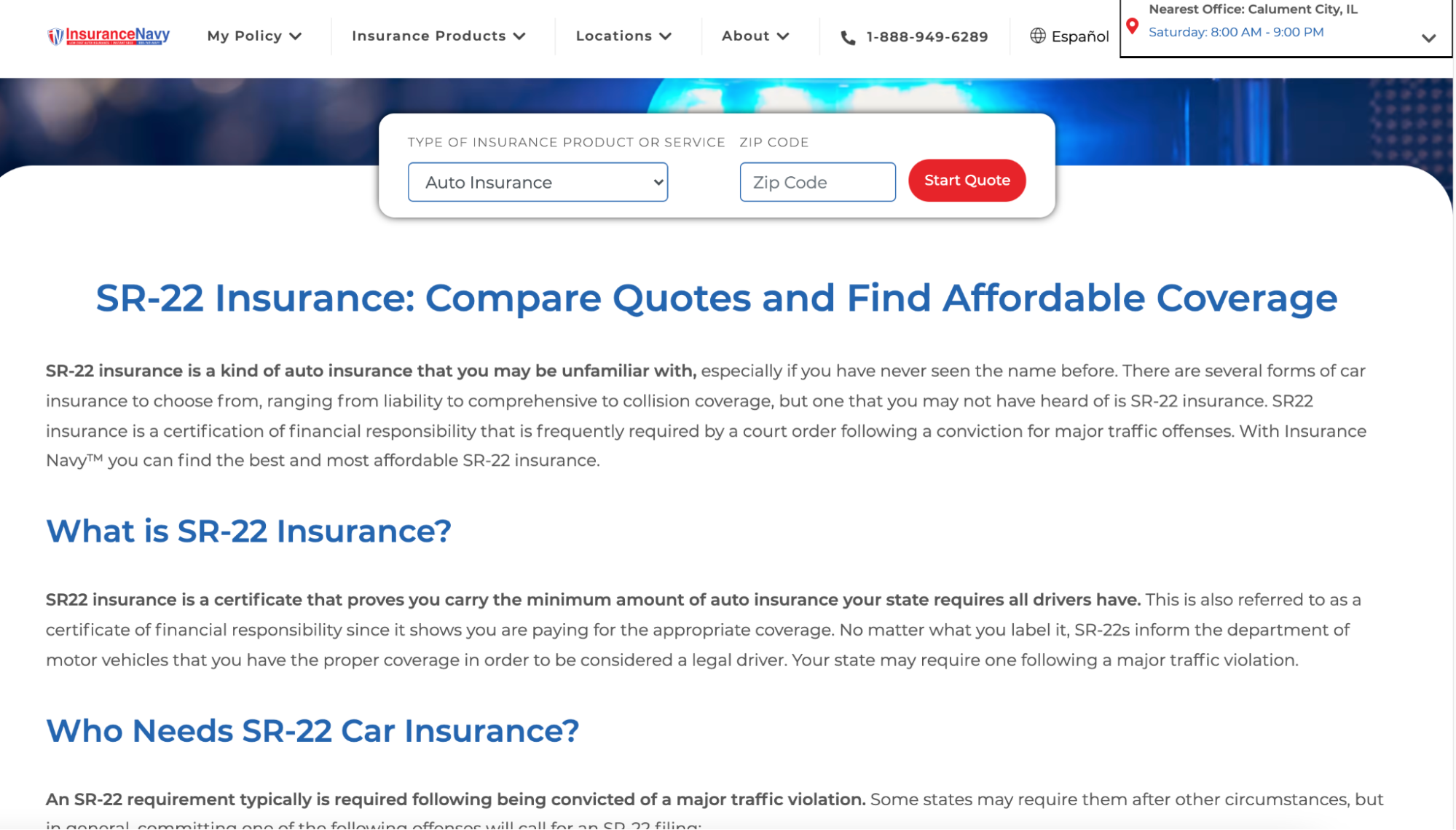
For inspiration, look at this example of helpful content from Insurance Navy, an insurance provider that aims to find its customers the most suitable coverage. Their blog contains many articles that answer common questions about SR22 insurance, which is a topic that many customers might not know much about before reading.
Insurance Navy does a great job of educating their readers about SR22 insurance in a natural and easy-to-read manner. You can apply the same strategy to your content by identifying topics that your audience might not understand in your industry and then build educational content to help establish your business as a go-to source of valuable information. This will show that you completely understand your customers’ needs or concerns and can help them to solve whatever problems they’re experiencing.
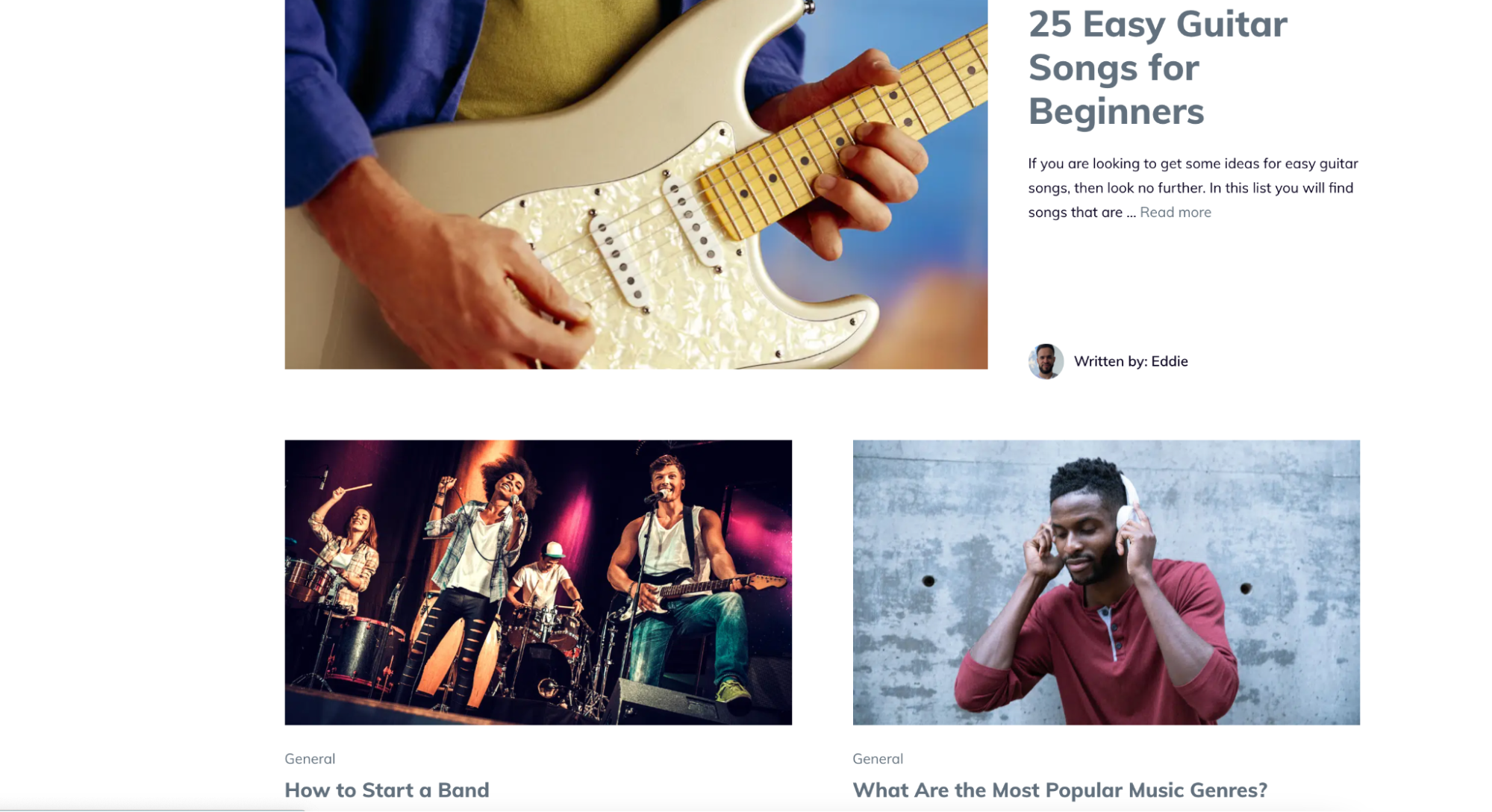
Another great example comes from Musician Authority. Since this site aims to support up-and-coming musicians in nurturing their talents, they hit it out of the park with their content that covers everything from how to start playing an instrument to the steps needed to start a new band. Since their target audience is beginner musicians, they tailor their content to meet their needs. The titles are straightforward and reference terms like “beginners” to show that they support musicians at the start of their musical journey.
Musician Authority does a great job of connecting with their audience by building content that addresses the needs of their readers at all stages of a musician’s journey. You can apply the same strategy by thinking about what matters to your audience and then creating high-quality content to answer questions and provide guidance for them along the way.
As you fine-tune your content strategy, make it your goal to meet the needs of your target audience. Go above and beyond to offer relevant and meaningful content that will address their pain points and questions.
This will go a long way towards making your customers feel understood and building trust in your brand, driving conversions and boosting sales.
Make customers feel welcome with images of people who reflect them
If you can help your ideal customers imagine themselves using your products or services, they’ll aspire to buy them. Plus, you can take steps to make your customers feel welcome on your website so they know that your products or services are definitely for them.
One of the most effective ways to ensure all this is with images of people who represent your target audience. This means using images that reflect your target customers’ backgrounds and ideals.
Using imagery that reflects your target audience is extremely powerful because it helps your customers see themselves using your products or services. It also shows that your company is meant for them, which will inspire purchases.
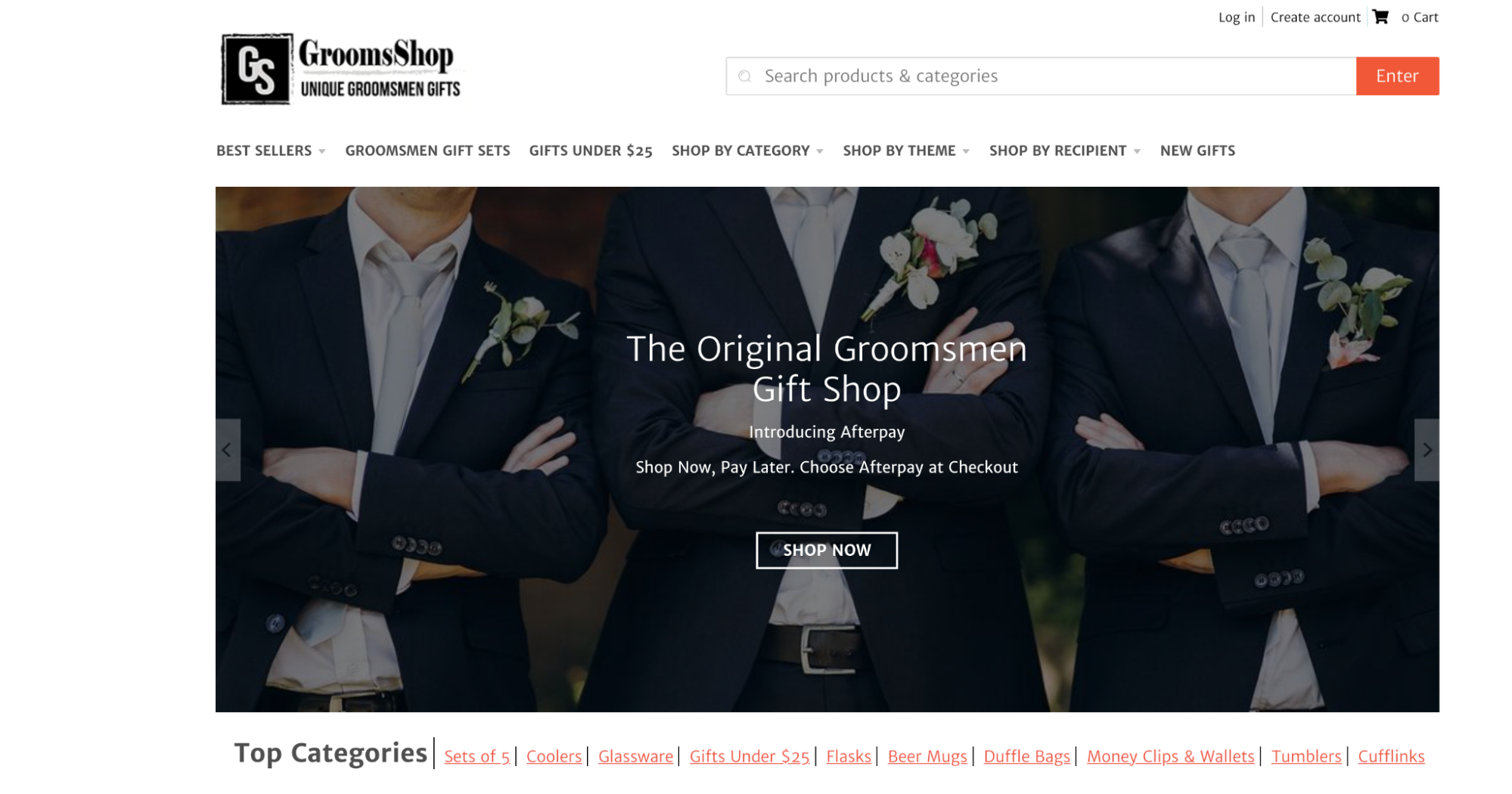
A company that does this well is GroomsShop, an online gift shop for groomsmen. The banner image at the top of the company’s homepage shows a groom flanked by his groomsmen, reflecting their target customers.
By using images of groomsmen on the big day, GroomsShop demonstrates that their products are perfect for a groom’s wedding day needs. You can use the same design strategy for your site by using images that speak directly to your target audience to create a powerful bond and quickly connect with prospective customers.
Choose imagery for your site that represents your customers and what you hope they achieve with your products or services. Ensure the images maintain the tone of your site and reflect a diverse customer population. The clearer a visitor can see themselves reflected in your site, the more likely they will be to convert.
Earn website visitors’ trust with user-generated content
If you want your ideal customers to shop with you, you need to earn their trust. One of the most effective ways to do this is with user-generated content that shows people just like them have had positive experiences when shopping with your business.
Your social media platforms offer a great place to generate and locate user-generated content. Simply offer incentives or run contests that prompt past customers to share their experiences online.
Of course, you’ll need to devise an acceptable use policy that outlines how your company will use images on your site and on your social media accounts. This policy is important because it protects your business, and you should share it with your followers if you want to use their images in your marketing campaigns. But, once you have their permission, you’ll have an endless supply of marketing materials at your fingertips.
The coffee and donut chain Dunkin’ Donuts has a user-generated content campaign that demonstrates just how lucrative this marketing technique can be. They use a unique hashtag to encourage their audience to tag photos that feature their products. Dunkin’ Donuts then posts the images on their website and Instagram feed to evoke emotions from their followers. This tactic emphasizes how their products bring families and friends together throughout the year and during holidays like Christmas.
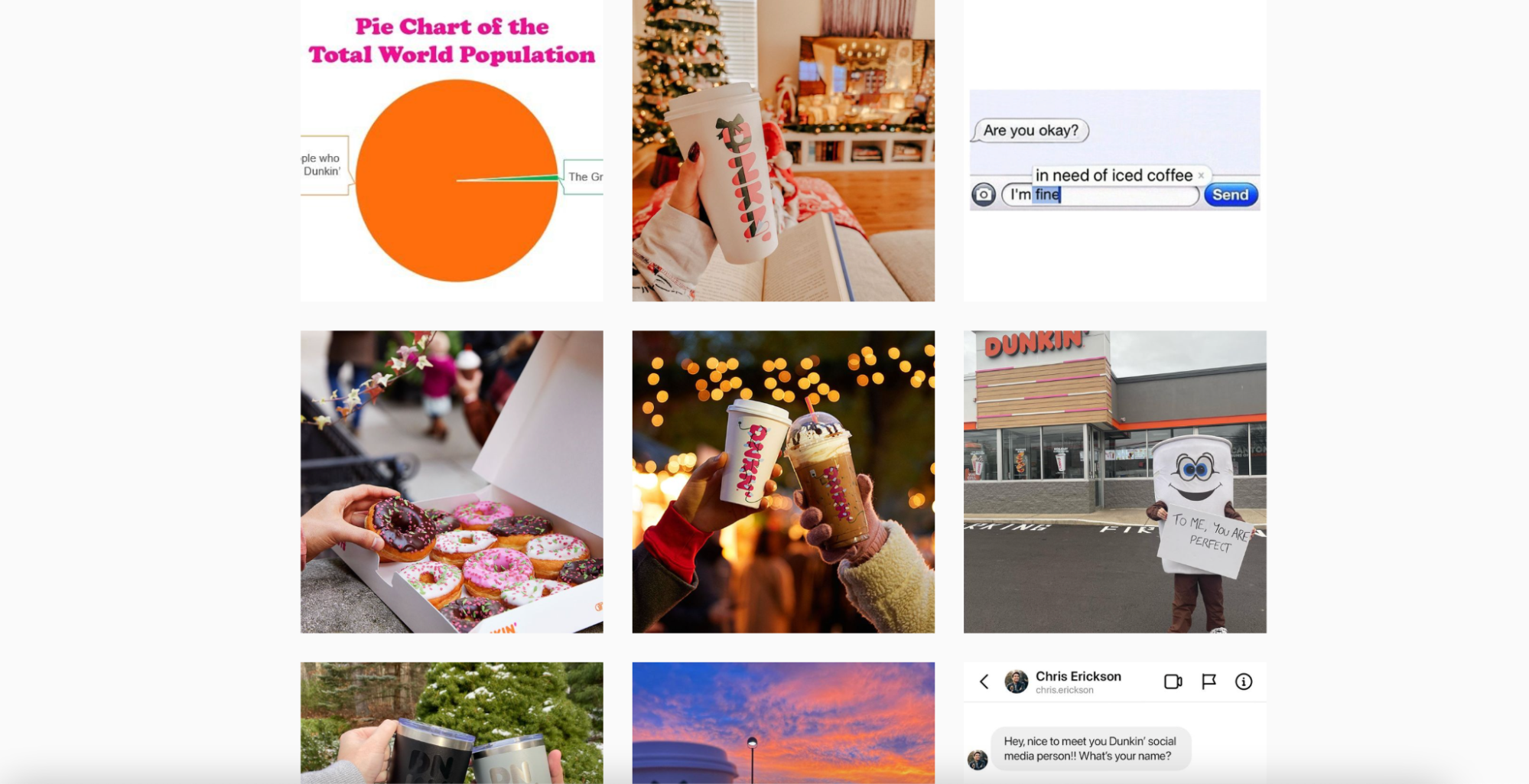
Notice how these user-generated images all have a soothing feel to them. The people in the pictures also showcase their Dunkin’ Donuts while at home or out on the town. This is an excellent strategy for showing potential customers that there are real people out there who are enjoying the company’s products.
Take inspiration from the brand and use social media to market your online store. Your existing customers have the power to market your brand for you, too. So, engage your audience by encouraging them to show you how they use your product or service.
Once you obtain permission, you can even use the images that inspire the right emotional reaction. Remember to thank your users and give them a shout-out for their unique content and support.
Summary
Emotional marketing can be tricky at first, but you must call upon your potential customers’ emotions to forge a connection.
As you’re generating your marketing strategy, think about how you can use emotion to power up your message and strike a chord with your visitors that will inspire them to convert and boost your sales numbers.

